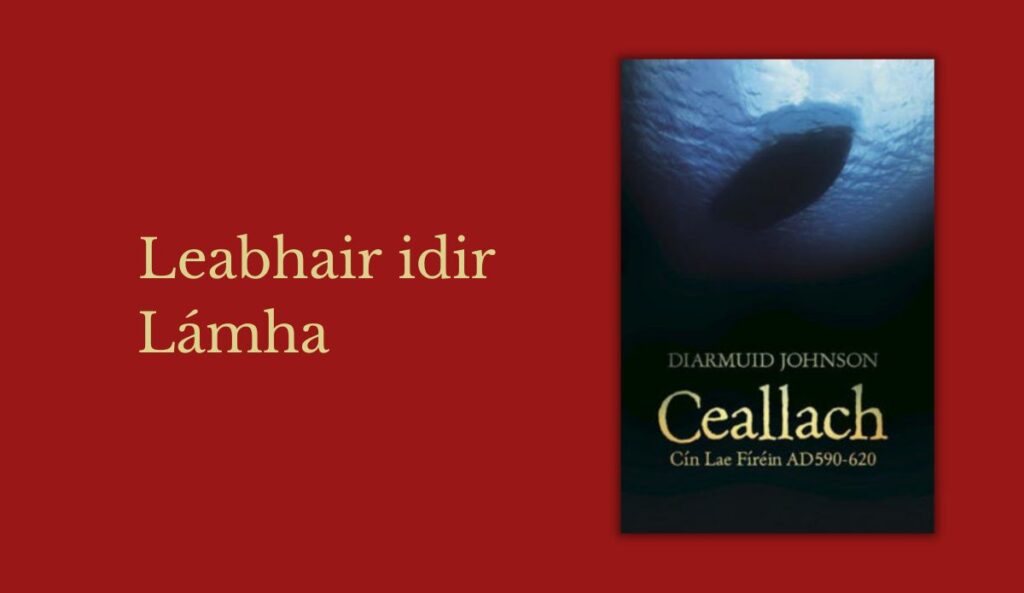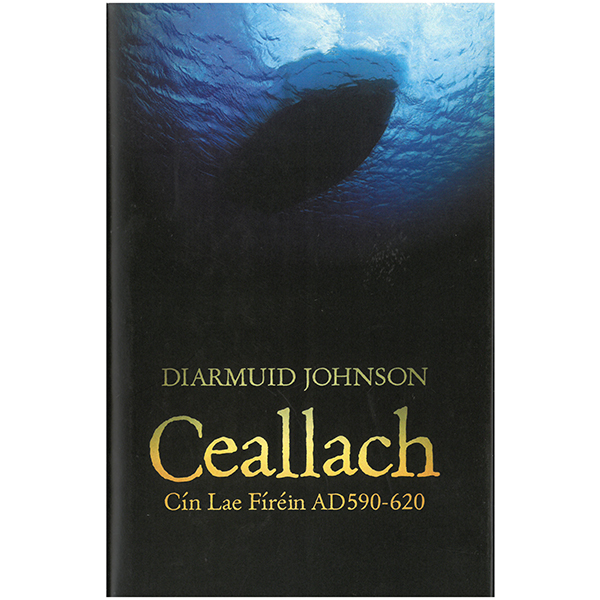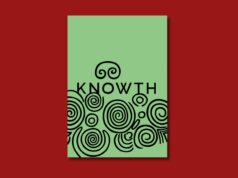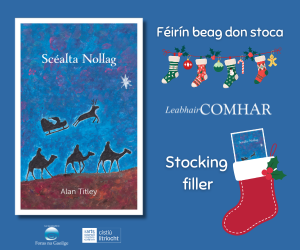
Ceallach – Cín Lae Fíréin AD590-620|Diarmuid Johnson|Leabhar Breac|€16
Shining a light through the ages with exhilarating use of language—Ceallach, by Diarmuid Johnson
by Cathal Póirtéir
Diarmuid Johnson has become a name of note in Irish language writing as a result of his captivating retellings of a number of classic stories from old Irish literature, and his cultural travelogue Seacht dTír Seacht dTeanga.
His work has deservedly won him both acclaim from readers and critics and a number of well merited literary prizes. He also publishes poetry in a number of languages including Irish.
Regular readers of Irish may well have enjoyed his retellings of classic tales from our older literature in the three volumes of the Tara series (Sraith na Teamhrach): Conaire Mór (2017), Tuatha Dé Danann (2018) and Éadaoin (2020).
If you haven’t got to them yet and if rich Irish and beautiful recreations of ancient narratives form part of your literary palate, then there’s a real treat in store for you. When you’ve read those you’ll want more and here it is.

Shining a light through the ages
Diarmuid Johnson’s latest offering, Ceallach – Cín Lae Fíréin AD590-620, tells the story of one of the sixth century Irish monks who accompanied Colmbanus on his missionary journey from his monastery in Bangor, County Down to the eternal city of Rome.
Johnson’s account is an imagined diary kept by Ceallach as Colmbanus and his twelve followers made their fitful European pilgrimage. Ceallach eventually parted company with Columbanus who travelled on to Italy, while Ceallach founded his hermitage in Switzerland (St Gallen named in his honour).
It was here in a later monastery that the famous poem Pangur Bán was penned in a margin by an unknown monk copying in the scriptorium. The monastic library and university became an important centre of Christian learning and scholarship in Europe.
Various lives of St Gall and some legends of his miraculous feats have come down through the centuries and provide the author with the basis for the events recounted and reimagined here.
It is a worthy and worthwhile project to shine a light through the ages and pinpoint an important person, largely forgotten over the years.
Recreation of time and place
Who better to retrace the peregrinations of this noble monk across the continent a millennium and a half ago than the even better travelled and well-read author of the prizewinning Seacht dTír Seacht dTeanga?
The writer’s recreation of time and place is excellent, atmospheric and credible throughout. This is a Europe long gone when travel was difficult and dangerous for those brave or foolish enough to attempt long journeys through challenging and little travelled tracks over mountains and through forests, on dangerous seas and over turbulent rivers.
Ceallach’s journey therefore has a number of physical challenges and they help provide some narrative tensions.
The travellers’ greatest source of danger is the uncertain encounters with and the shifting alliances of the local leaders and tribes they have to deal with on their journey. There is also some discord and discontent within the group and with Columbanus’ leadership and decisions. Ceallach eventually leaves the Rome-bound fraternity and decides to set up a monastery in what became St Gallen.
Exhilarating use of language
The story is thoroughly researched, vividly imagined and well told but, for me, the story itself was not the most enjoyable part of Johnson’s tale. The forte of Ceallach is the author’s exhilarating use of language.
As with the other tales, he manages to find a register that is rich, varied and appropriate to his story. The writer is well versed in the language of our ancient and modern literatures, and in the living language of today; this allows him to recharge words and phrases from the past to present readers of the present with a retelling that we can accept as being that of a sixth century monk.
Reading Ceallach it is easy to imagine the glee of the writer as he decides on the correct word here, the alliteration there, the telling short phrase or a purple passage.
It really is a joy to read, even though many readers will find it advisable to have a dictionary on hand for some of the less familiar words. I did—and it added to the reading experience and the enjoyment of the unusually rich vocabulary that Diarmuid Johnson delights in sharing with his readers.

Cathal Póirtéir has specialised in researching, presenting and commissioning Irish interest material in various radio formats and in books, including history, literature and folklore in Irish and English, as well as current affairs and drama.












